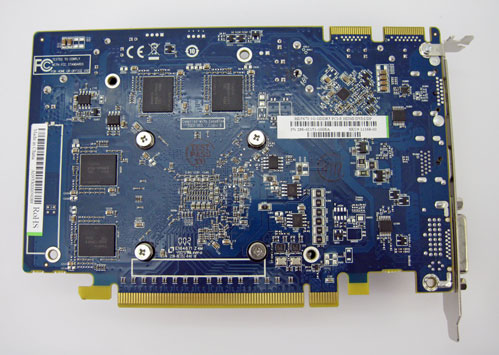Index
Page 3 of 10
Sapphire HD 5670 comes with Arctic Cooling’s solution which we’ve seen before and quite liked it. This proves that Sapphire put enough thought in building the card and the cooler is silent and cool, regardless of whether it’s in idle mode or is running games. The only flaw to this cooler, if there is one, would be the dual-slot width.

The following photo shows that the cooler is higher than the card’s I/O panel. Sapphire offers 1x dual-DVI, 1xHDMI and 1xDisplayPort, but Sapphire thought of users who need a VGA out as well and included a DVI-to-VGA converter in the package.
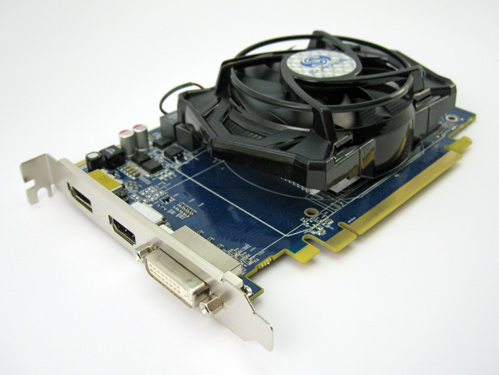
Eyefinity technology allows for using three monitors on one card simultaneously, although we doubt many will use this feature. The card offers one dual-link DVI and one HDMI connector (which thanks to Sapphire can be used as DVI as well), and it basically means that connecting two monitors will be a breeze. Unfortunately, if you want to connect the third monitor and don’t own one of currently very expensive DisplayPort-supporting monitors, you’ll have to find some kind of a DisplayPort-DVI/HDMI converter.
The PCB is Sapphire’s typical blue, but it seems that Sapphire stuck to reference PCB design. In fact, you can see the guidelines for the reference single-slot cooling. The card won’t require any connectors and the power from PCI-Express will be enough to feed the card in all scenarios. AMD claims maximum consumption of 61W whereas idle consumption stands at mere 14W.
Sapphire opted on CrossFire connectors as well, which is a bit strange because the same technology can be implemented via the PCI-E bus. Still, Sapphire’s card will be better than the reference HD 5670 in CrossFire setups on motherboards lacking PCI Express (2x) x8 lane or higher.
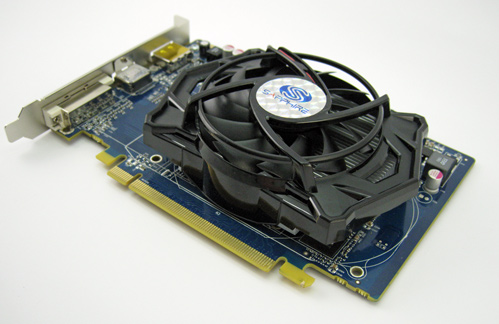
Sapphire HD 5670 card is about 16.5cm long, some 2cm shorter than the HD 5750. Just like on our recently tested HD 5750, the HD 5670 comes with Hynix GDDR5.
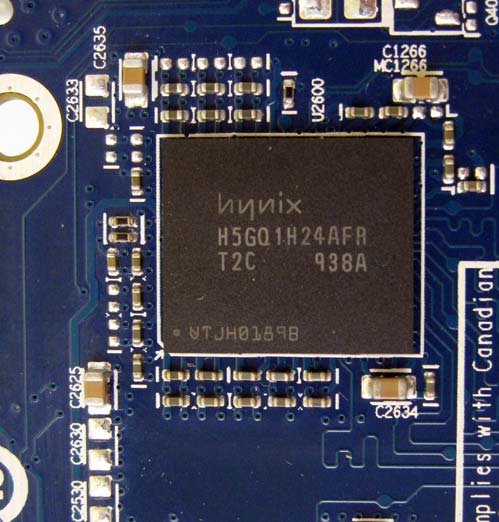
The card features 1GB of memory – 512MB on each side. The following picture shows that the memory on the front is partially cooled by the fan and while that’s not the case on the back of the card, memory temperatures aren’t that high to begin with and thus it doesn’t really require cooling.
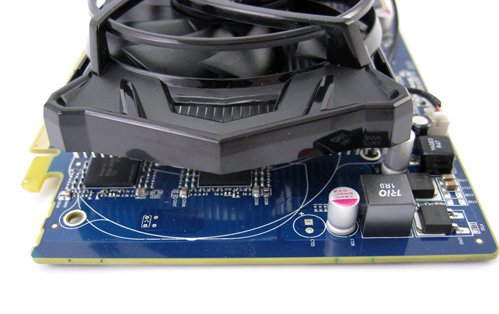
Fan speed can be monitored and regulated via CCC Overdrive. We must admit that the fan was silent in auto mode, so we really had no need to tinker with it.
Core temperatures in idle mode hang around 28°C whereas stressing the card with FurMark results in temperatures up to 55°C (with room temperature at about 22°C).
